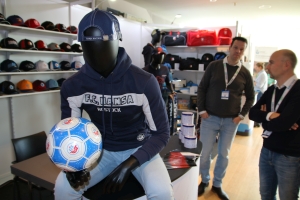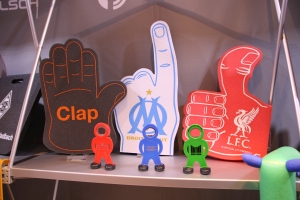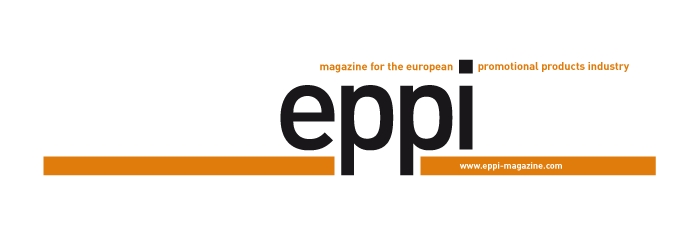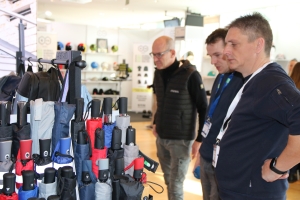
The exhibitors included numerous well-known promotional products companies such as elasto, Fahnen Herold, Jung, Kalfany, koziol, Promonotes, Promowolsch, Schäfer Promotion and WIL Langenberg for instance. How fine the border between merchandising and haptic advertising is became clear once again at the event. In contrast to promotional products, which are distributed free of charge to bind customers or generate incentives to buy for example, the merchandising sector is a lucrative business, especially in the field of professional sports and the entertainment industry. According to a current survey the German premiere league clubs earned around 174 million Euros revenue in the 2021/22 season alone. This shows that fans are prepared to pay a lot of money for branded products of their favourite clubs and brands.

T-Shirts, caps and jerseys are especially popular merch items, which was reflected at the MMHH by the high number of suppliers and customising companies from the textile sector. However, many other product groups were represented too – from watches and electronic items, to toys and confectionery, through to crockery, perfume and jewellery.
The FanCommerce Forum, which was organised by the business platform, ESB Marketing Netzwerk, was held during the show for the second time. Expert lectures informed the visitors about the trends and current developments in the merchandising and licensing segment. A buffet in the dining hall with a view over the pitch – the fitting setting for the show organised by the Hamburg Sports Club (HSV) – catered to the guests’ culinary needs.
Sascha Steinbrück, Head of Merchandising at HSV, drew a positive conclusion: “Everything revolved around our industry in the Volksparkstadion this week and I am convinced that all of the participants went home with a good feeling and inspiring thoughts.”
// Andreas J. Haller
Photos: Andreas J. Haller, © WA Media




